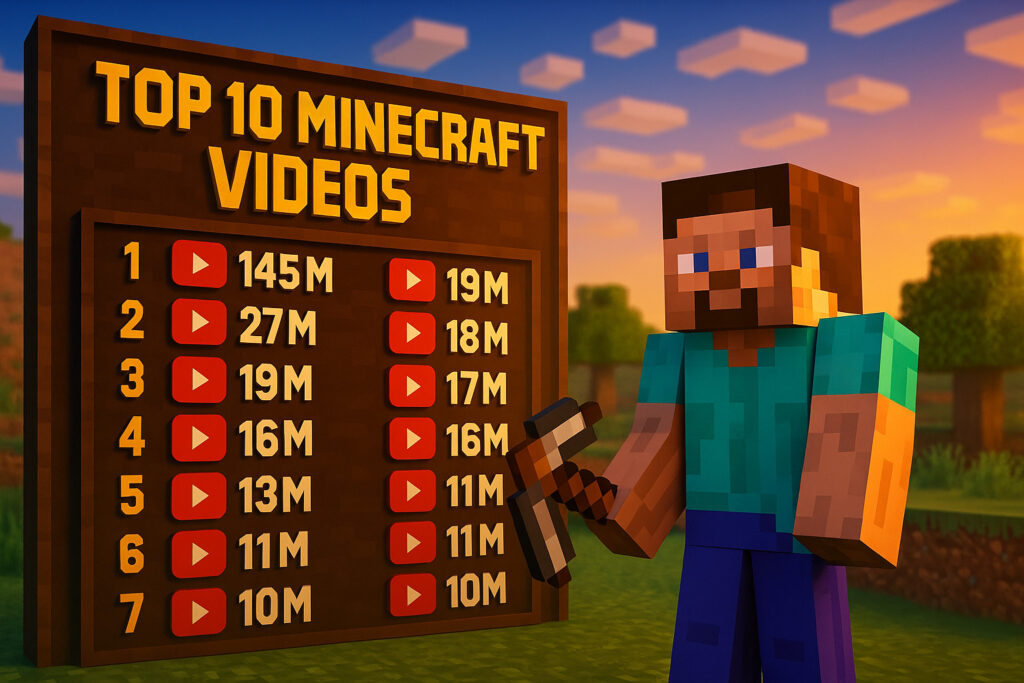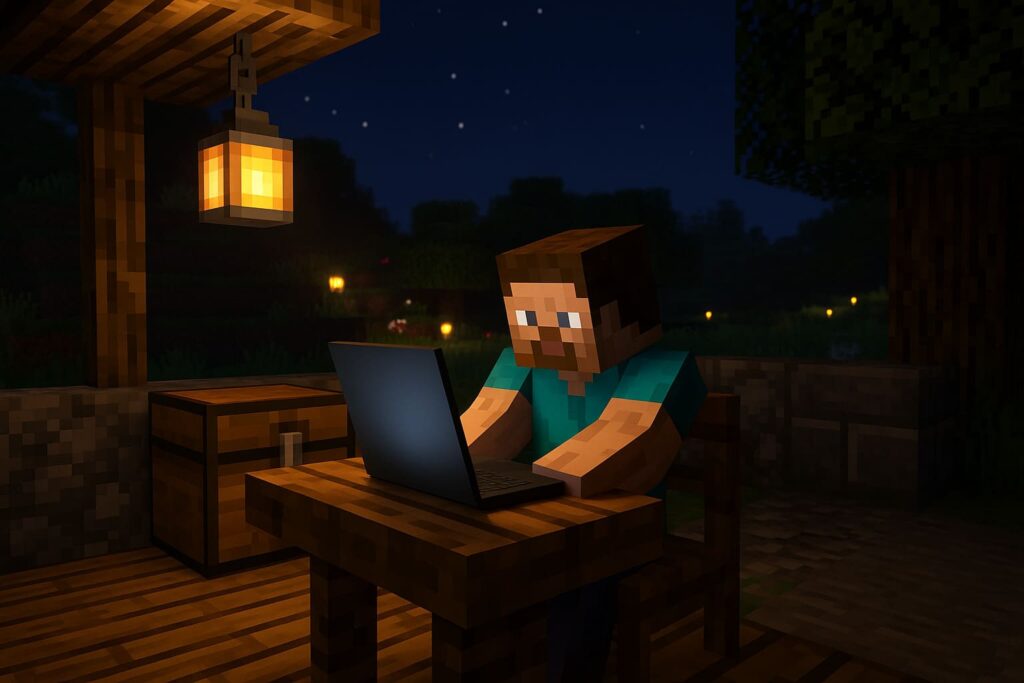🌊 Introduction: Alone on an Empty Island
It was just me, a tiny patch of land, and a single lonely tree—surrounded by an endless ocean. No villages, no animals, and no food. Nothing but silence. From the very beginning, I knew this wasn’t going to be a normal survival run. I was stranded on a deserted island in Hardcore mode, and I had exactly 100 days to survive.
But I didn’t want to just survive.
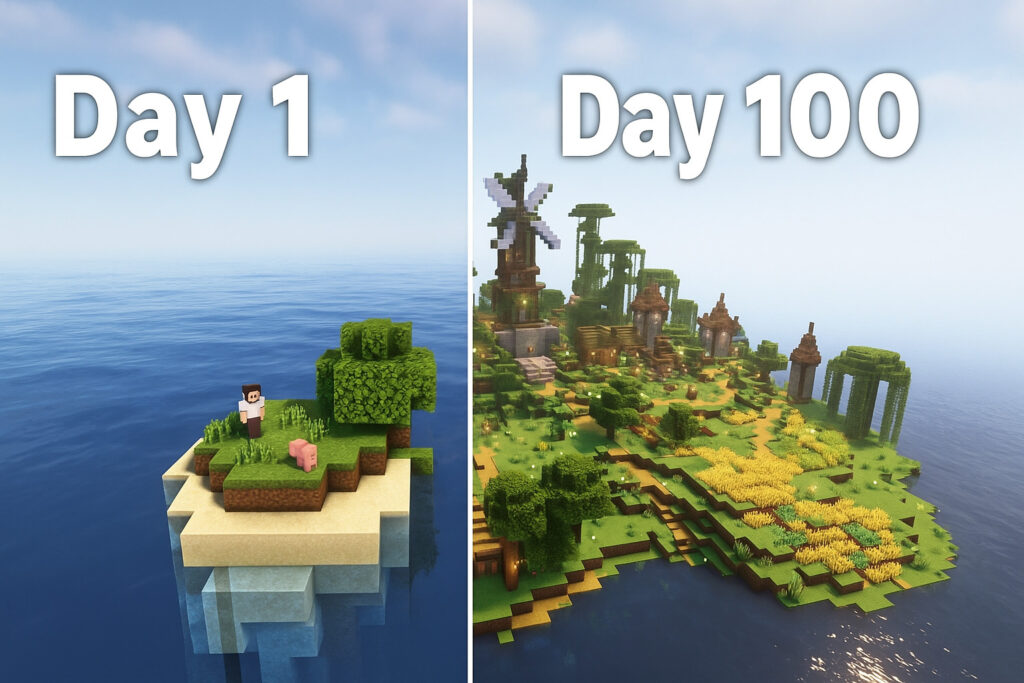
I wanted to turn this barren speck of dirt into a thriving paradise. I wanted villagers, farms, enchanted gear, and maybe—just maybe—something that felt like home. With no friends, no resources, and no safety net, this was the hardest challenge I had ever set for myself.
🌱 Days 1–10: From Bare Dirt to a Tiny Beginning
I started with nothing—just a tiny, lonely island floating in the middle of a vast ocean. There was no food, no animals, no villages, and only a single tree growing at the center. It was quiet, isolating, and immediately overwhelming. I had no idea how I would survive, let alone make it through 100 days in Hardcore mode.

Still, I had to begin somewhere.
I chopped down the only tree and prayed for saplings. Thankfully, a few dropped. I replanted them right away, hoping they would grow before I ran out of resources. Then I flattened the small patch of land and placed a crafting table right on the dirt. With the limited wood I had, I crafted basic tools and started digging.
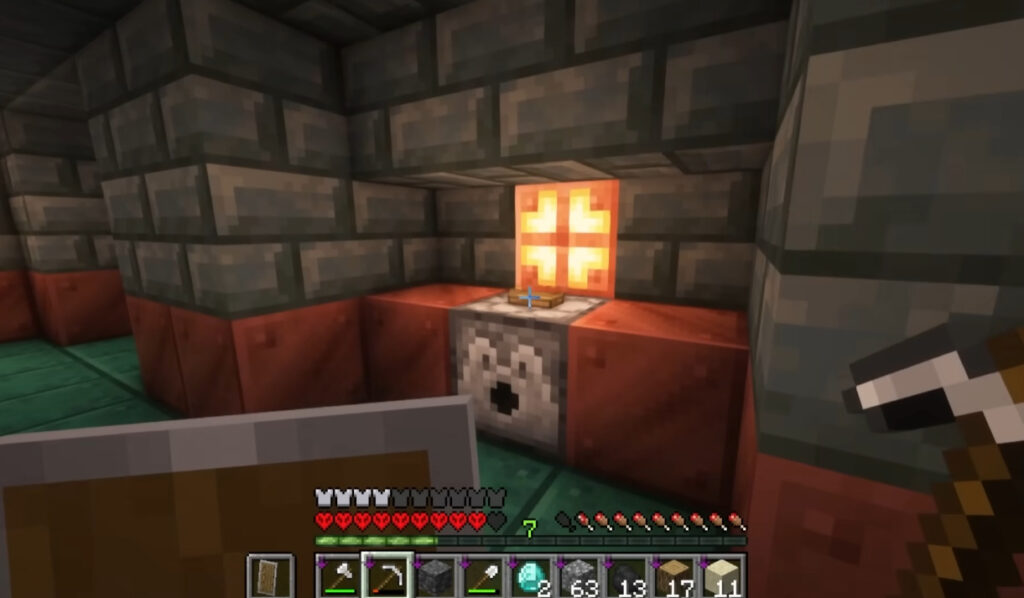
There were no animals to hunt and no visible food sources. So I turned to the tall grass scattered sparsely around the island, hoping to get seeds. After breaking dozens of grass patches, I managed to collect a few seeds—enough to plant a tiny wheat farm. I tilled three plots of soil, planted the seeds, and hoped the sun would do the rest.
By the third day, my first sapling had grown into a tree. I harvested it immediately and expanded the island with wooden slabs to conserve resources. I used the new wood to build a very basic shelter—nothing fancy, just enough to hide from hostile mobs at night. It felt like a small win.
But then the hunger set in.
With no animals nearby and the wheat still far from mature, I quickly realized I needed a backup food source. I dove into the ocean to gather kelp, dodging drowned mobs and resurfacing for air as often as I could. It was risky, but it was the only option. Once I had enough, I returned to my island, crafted a furnace from cobblestone, and began cooking the kelp. It wasn’t much, but it kept me from starving.
With food barely covered, I turned my attention underground.
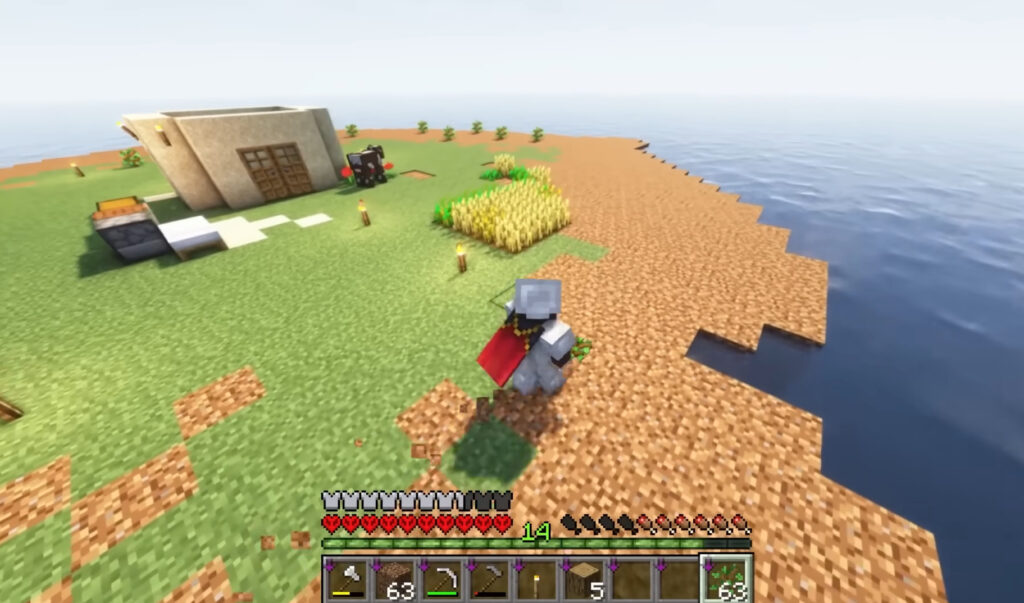
I began digging a staircase from the edge of the island, slowly descending into the earth. I needed coal for torches, stone for better tools, and hopefully iron to start upgrading my gear. It took several in-game days, but eventually, I found coal and iron deep underground. I smelted the iron into ingots and crafted my first set of iron tools—a major milestone.
Back on the surface, I planted more saplings and expanded the island using dirt and slabs. I even built a small dock to make the place feel more like home. The wheat farm was growing slowly, and I added more tilled land as I found seeds.
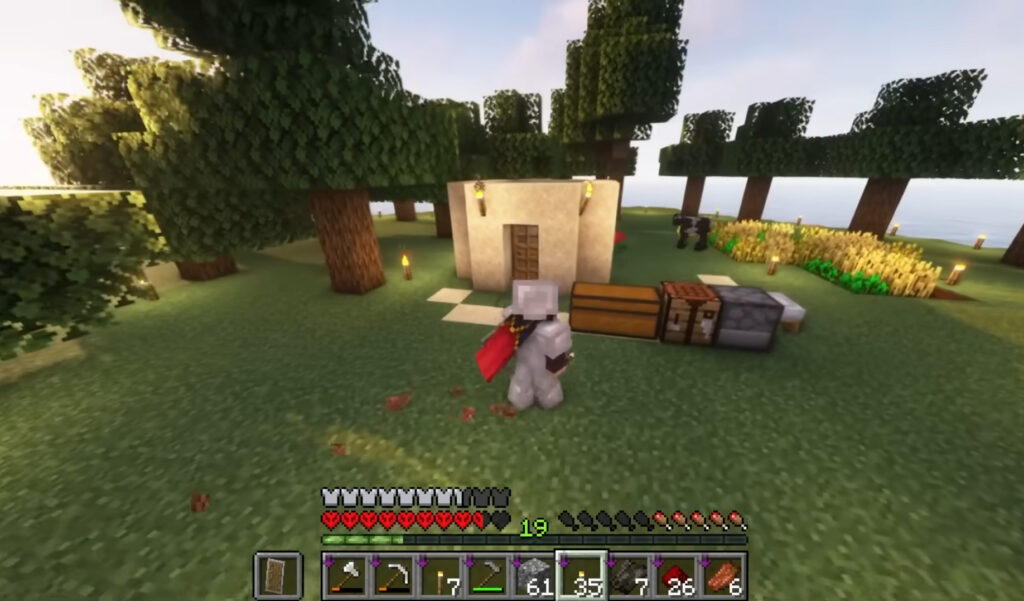
By Day 10, the island was still small, but it no longer felt empty. I had a basic shelter, a patch of farmland, several growing trees, and just enough food to keep going. It was far from comfortable, but it was a start. And in a strange way, I was proud of how far I had come.
I was still alone, still surrounded by ocean—but now I had a plan. I was going to build something real here. Not just survive, but create.
⛏️ Days 11–30: Into the Depths
With my island slowly taking shape, it was time to look deeper—literally. I needed better resources to survive long-term: coal for torches, iron for armor, and eventually, diamonds. My small farm could keep me alive, but if I wanted to thrive, I had to go underground.
I expanded the stairway I had started earlier and carefully made my way further into the earth. The caves beneath the island were dark and dangerous, filled with shadows and eerie sounds. Every step felt like a risk—especially in Hardcore mode, where one mistake could end it all.
After crafting a decent amount of torches, I began lighting the tunnels methodically. I mined whatever I could: coal, iron, copper—anything useful. Eventually, I discovered a large cave system. It was terrifying but rewarding. I fought off skeletons and zombies, sometimes barely escaping with half a heart. But the deeper I went, the more I found. My backpack started filling with.

One day, while exploring a narrow shaft, I saw something glowing faintly under the stone. I mined cautiously—and there it was: my first diamond.
The rush was real. I had found a small vein, just three diamonds, but it was enough to craft a diamond pickaxe. I decided to save it for important blocks later, but the discovery lifted my spirits. I was no longer just surviving—I was progressing.
Back on the surface, I spent a few days expanding the island further. I collected gravel and dirt from underground to create more farmland. I built a small bridge over a shallow trench of ocean water and started organizing my growing collection of items into chests. I even constructed a better house—still basic, but sturdier than before, with a small lookout platform on the roof.
Hunger remained an issue. My kelp supply was low, and the wheat farm was growing slowly. Without animals, I had to be smart. I started shearing leaves and punching trees, hoping for apples and saplings. Every resource had to be stretched as far as possible.
During one trip below ground, I discovered an abandoned mineshaft. It was massive—and dangerous. I carefully looted cobwebs, rails, and chests, all while fending off cave spiders and creepers. At one point, I stumbled into a trap, triggering arrows from a hidden dispenser. I barely escaped, heart pounding.
But the mineshaft also gave me string for a bed, more iron, and even a name tag. I returned to the surface and finally crafted a bed—my first chance to skip the night and avoid phantoms.
With each passing day, I was building something real. The island now had trees, crops, torches lining the edges, a solid house, and an entrance to a sprawling underground system. I had diamonds in a chest, iron tools in hand, and a dream still forming in my mind.
My next goal was clear: build a village.

I had no idea how to find villagers or whether I could transport them here, but I knew it had to happen. This island wouldn’t be complete without life—without purpose. Thirty days had passed, and I had turned a speck of dirt into a base.
The real work was just beginning.
🧱 Days 31–60: Building Infrastructure and Hope
By the time I reached Day 31, my little island no longer looked like a survival starter plot—it was slowly becoming something more. With several patches of farmland, a growing supply of tools and resources, and my first diamonds stored away safely, I knew it was time to shift my focus from surviving… to building.
I began with expansion.
Using the gravel and dirt I had mined underground, I crafted coarse dirt blocks and converted them into regular soil to increase my farmland. The island grew outward in all directions, no longer just a slab floating in the ocean, but a structured landmass with layers of activity.
With my diamond pickaxe now available, I upgraded my tools and began collecting more valuable materials. I forged a full set of iron armor for safety and planned to find enough diamonds for something better.
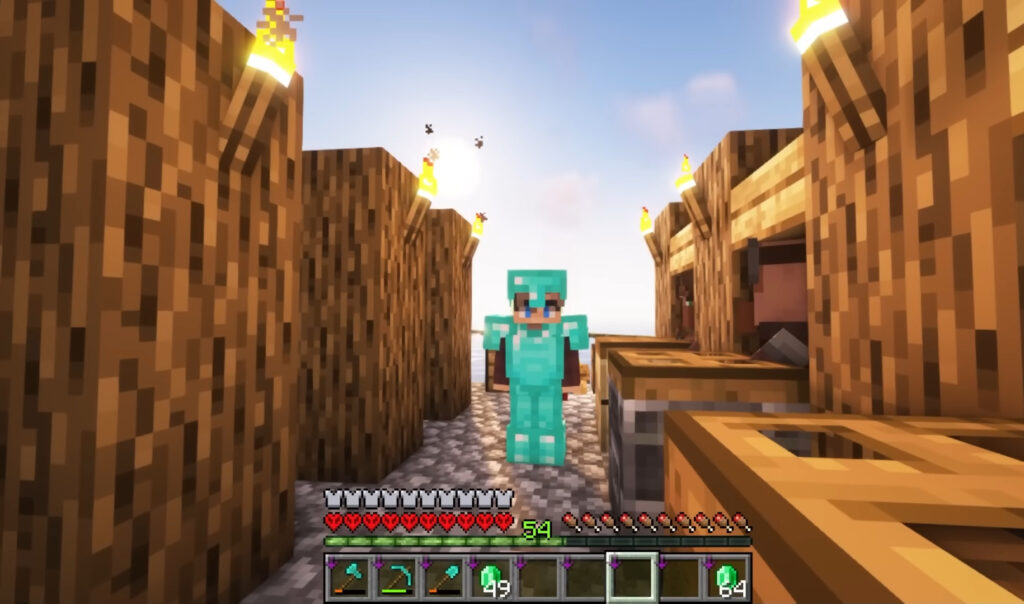
Underground, I continued exploring the abandoned mineshaft I had discovered earlier. I looted string, rails, cobwebs, and ores—and then, deep within a dark corridor, I encountered something unexpected: a zombie villager.
My heart raced. This was the moment.
I had dreamed of turning this island into a village, but that meant finding villagers—and in Hardcore mode, that was no easy task. But a zombie villager was the first step. I quickly rushed back to the surface and began preparing: brewing a weakness potion and crafting a golden apple.
That night, with everything ready, I returned to the cave. I splashed the zombie villager with weakness, fed it the golden apple, and waited.
The transformation took time—but it worked.
He became the first true resident of the island.
I named him silently in my head and quickly began building a safe place for him to stay: a small stone house with a door, torches to keep mobs away, and a bed. Over the next few days, I managed to cure a second zombie villager as well.
Now there were two.
That’s when things began to change.
I planted more crops, harvested more wheat, and used it to make bread. Bread became my new currency. I gave some to the villagers—and before long, a baby villager appeared.
It was working.
I added more beds, more workstations, and expanded the island’s layout with pathways, fences, and torches. I used wood, stone, and glass to build new houses—each one designed with purpose. A fisherman’s hut near the water. A small library for a future librarian. A smithy, still unfinished, waiting for iron tools and anvils.
At the center of the island, I built a fountain. Nothing fancy—just water, cobblestone, and slabs—but it gave the island a feeling of community.
By Day 50, my island had become a village.
Not a perfect one. Not a grand city. But a real place. A place with people, jobs, and food. A place that was alive.

I spent the next ten days focused on defense and efficiency. I placed fences around the perimeter, lit every dark spot to prevent mobs, and started building a trading hall. I mined more stone and wood, expanded my storage system, and began using emeralds to trade with my villagers.
At night, I would climb to the top of my lookout post and gaze across the island. Torches flickered, crops swayed in the wind, and the quiet hum of villagers filled the air.
I had started this journey on a patch of dirt, alone and hungry. Now, I was the founder of a village—a builder, a protector, and a part of something bigger than myself.
🐾 Days 61–80: The Golden Age Begins
With a handful of villagers now living on the island, everything began to shift. What started as a personal challenge to survive had turned into a meaningful project—something greater than myself. The island was no longer just my home. It was becoming a community.
I called this era the beginning of my island’s “Golden Age.”
First, I focused on structure.
I reworked the island’s layout to include defined paths between buildings. I used gravel, wood, and stone bricks to shape the roads, giving each part of the village a distinct purpose. I built more homes, each with beds, workstations, and decorations to keep the villagers safe and productive.
Then I turned my attention to farming.
I cleared out more land, added irrigation canals, and expanded the crop fields. I began alternating wheat, carrots, and potatoes, using bone meal to speed up growth. The fields now provided more than enough food—not just for me, but for breeding the villagers. With every harvest, I shared food with them, and watched as baby villagers ran through the streets.
Soon, iron golems began to spawn.
It was both shocking and comforting. They patrolled the streets like silent guardians, making the village feel alive and protected. I crafted name tags and began assigning roles to each villager. The librarian, the armorer, the cleric—each one had a name and a place.
Around Day 65, something wonderful happened.
A wandering trader arrived.
I had never been so excited to see him. Normally, players ignore wandering traders, but in my case, he brought exotic saplings—jungle and acacia—which I bought immediately. With new tree types in hand, I planted them in designated plots, giving the island much-needed variety in color and design.
It was around this time that I also noticed a stray cat roaming near the village center.
I froze.
Cats only spawn near villages, and seeing one meant the village was thriving. I rushed to the river, caught some raw fish, and slowly approached the feline. After a few tense moments, it accepted the food and became mine.
I named it quietly: Hope.
From that point on, the village didn’t just feel functional—it felt alive.
To honor this milestone, I built a small shrine at the edge of the island—a place to reflect. Just a few polished stone bricks and a sign that read:
“From nothing, something.”
As the sun set each day, I began to see the glow of lanterns across the village. Crops waving in the wind. Children chasing each other. Cats curled on rooftops. Golems standing watch.
By Day 80, I had done more than survive.
I had created a home for others.
And yet, deep inside, I knew there was more to come. My next goal was already forming:
It was time to enchant.
✨ Days 81–99: Enchanting, Expansion, and the Final Push
By Day 81, my island had transformed into a lively village—but I was far from finished.
My next mission was clear: it was time to unlock enchantments.
I began by crafting a full enchantment setup. First, I mined obsidian to build a nether portal and a few extra blocks for the enchantment table. I gathered sugar cane, crafted books, and spent days breeding cows for leather. Slowly but surely, I put together 15 bookshelves.
The moment I placed the enchantment table in the center and saw the swirling glyphs surround it—I felt it. Progress.
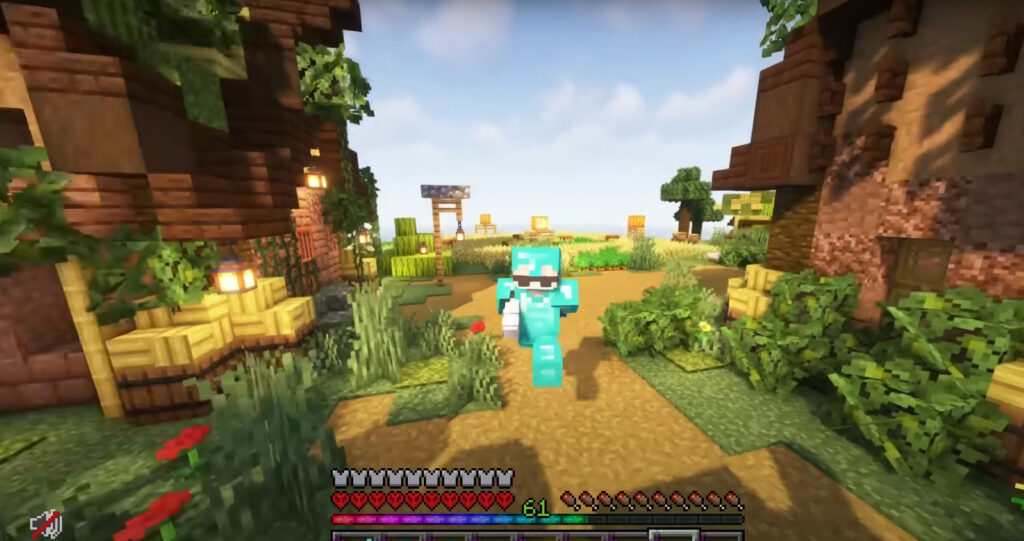
I enchanted my diamond pickaxe first, scoring Efficiency IV and Unbreaking III. Then came a diamond axe, a shovel, and eventually, a full set of diamond armor. Bit by bit, I became unstoppable.
Meanwhile, the village kept growing.
With more food and beds, the population began to swell. I built a small schoolhouse, a toolsmith’s shop, and a second farm plot just for pumpkins and melons. The villagers were thriving. Iron golems now roamed freely, cats lounged in every corner, and lanterns lit up the paths every night.
I also expanded the architecture.
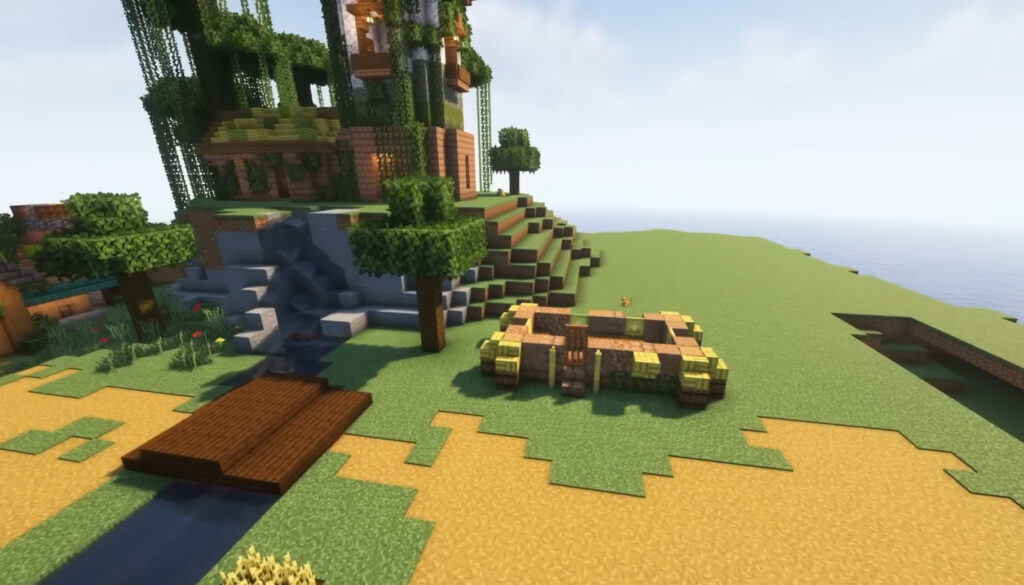
Wooden bridges connected the outer parts of the island. I built a watchtower on the far side—a place to look out over the sea. I even began carving out an underground vault to store rare blocks: gold, emeralds, diamonds, and enchanted books. The village was no longer just a survival base. It was a sanctuary.
There were still threats.
Occasionally, phantoms screeched above, or a creeper wandered in from an unlit corner. I had to stay alert. But with diamond gear and iron guards at every post, I felt safer than ever.
Around Day 95, I looked around the island during a sunset. The clouds were soft, the water calm, the fields golden in the fading light. The once-lonely patch of dirt had become a peaceful home. It was beautiful.
And still, one final day remained.
🏁 Day 100: Reflection and Triumph
The morning of Day 100 felt different.
I woke up, fed the animals, harvested the wheat, and walked through every path I had laid down. I greeted every villager, checked each chest, and gave one last fish to my cat, Hope.
This wasn’t just the end of a challenge. It was the end of a story.
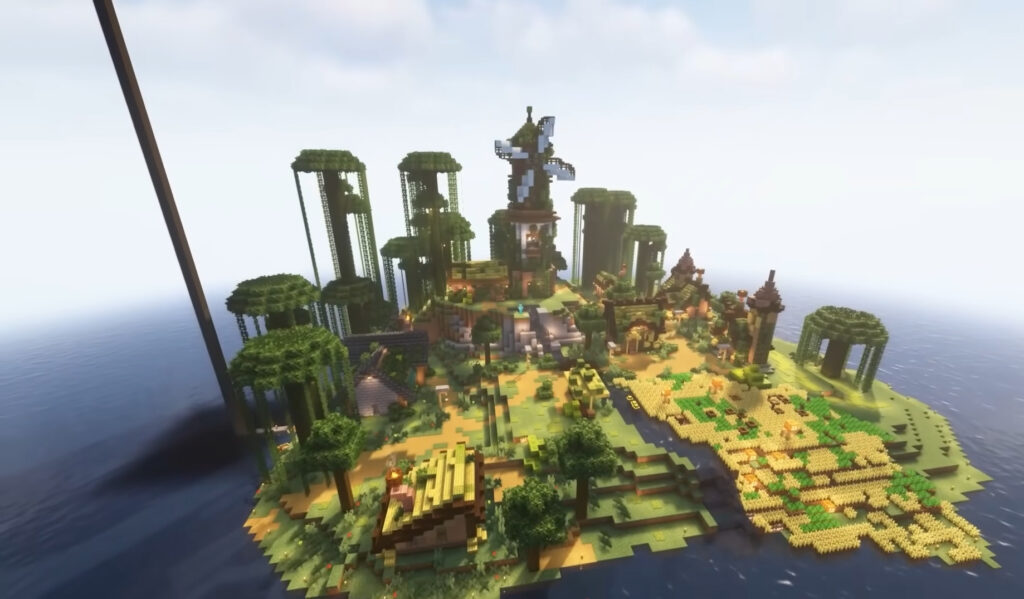
One hundred days ago, I stood on an empty island with no food, no shelter, and no plan. I was alone, cold, and desperate. Today, I was surrounded by light, life, and legacy.
I stood at the center of the village and placed one final block: a sign that simply read,
“Day 100. We made it.”
Then, I climbed my watchtower, took a deep breath, and looked out at everything I had built.
Fields. Homes. Paths. Towers. People.
This world was no longer about surviving.
It was about creating, growing, and protecting.
And somewhere, deep down, I knew:
This was only the beginning.

